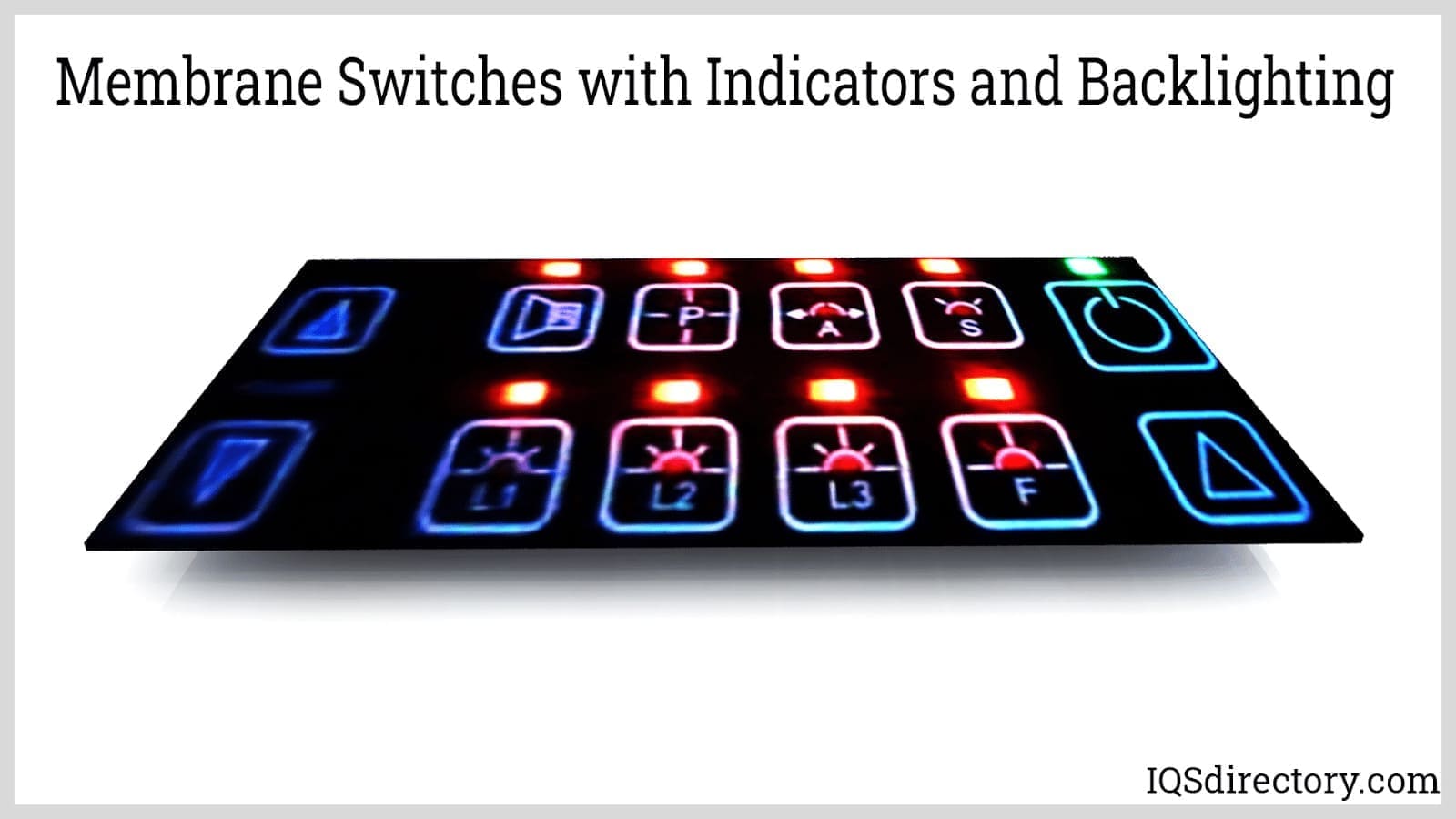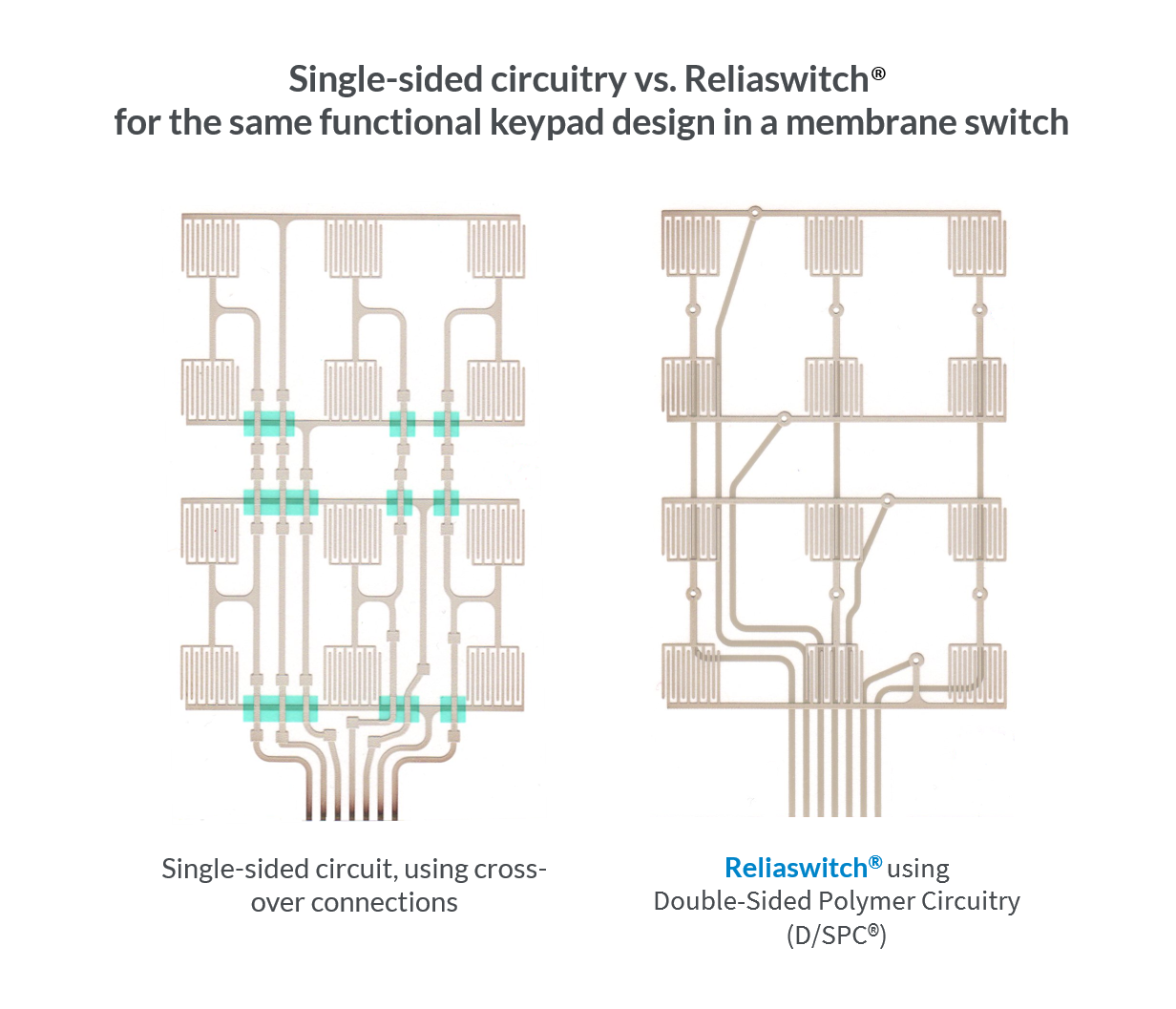What engineers need to know about membrane switch for medical systems
The Manufacturing Refine Behind Membrane Switch: What You Required to Know
The manufacturing procedure behind membrane switches combines cautious design, product selection, and quality control. It starts with recognizing the ins and outs of membrane switch layout and advances via different stages, consisting of material options and printing strategies. Each phase plays an essential function in making certain performance and durability. Nonetheless, the complexities of layer building and the strenuous testing requirements might expose understandings that are not right away noticeable. What lies beyond these fundamental components?
Understanding Membrane Switch Design
Although membrane buttons might show up simple at first glimpse, their layout entails intricate considerations that ensure performance and durability. The design process begins with a complete understanding of customer needs, consisting of the user interface's desired application and ecological variables. Ergonomics is a key element, as the layout must facilitate ease of use while making certain that responsive responses satisfies individual expectations.Moreover, the layering of elements, such as graphic overlays, adhesive layers, and conductive traces, should be precisely engineered. membrane switch. This split arrangement not only influences the switch's responsiveness yet additionally influences its durability. Interest is provided to the sealing strategies employed to protect versus dampness and dust, which could endanger efficiency. Furthermore, design considerations extend to aesthetics, where color design and visual quality improve user experience. Ultimately, the style of membrane layer switches over equilibriums performance, individual experience, and resilience, ensuring that they meet the needs of different applications efficiently
Materials Made Use Of in Membrane Layer Change Production
When choosing products for membrane button manufacturing, it is necessary to ponder both efficiency and longevity. The key products consist of polyester and polycarbonate films, which give versatility and toughness. These films are often covered with adhesive to ensure correct bonding to substrates. Conductive inks, commonly composed of silver or carbon, are essential for developing electric links within the switch, permitting dependable operation.Additionally, a safety layer, such as a hard coat, is regularly put on boost scratch resistance and durability. The selection of backing material, such as acrylic or foam, can substantially affect the switch's responsive feel and total user experience. Different ecological variables, including temperature and humidity, should direct product choice to assure peak efficiency in specific applications. Eventually, the ideal mix of materials contributes to the membrane layer button's capability and life-span, making educated choices important for makers.
The Printing Process: Creating Video and Text
The printing procedure in membrane layer button production plays a substantial duty in creating high-grade graphics and message. Numerous visuals layout strategies are used to assure visual charm and functionality, while careful ink option approaches are essential for durability and performance. Recognizing these components is basic for attaining ideal cause membrane switch layout.
Graphic Layout Techniques
Graphic layout methods play a vital role in the printing procedure of membrane switches, as they specify how graphics and message will eventually appear on the last product. Effective visuals design entails the tactical use of formats, colors, and typefaces to boost readability and visual charm. Designers often use vector graphics for scalability, guaranteeing that photos remain sharp at different sizes. Furthermore, focus to contrast and alignment is crucial, as it affects user communication and visual high quality. The unification of branding elements, such as logos, have to be managed with treatment to maintain brand stability. On the whole, thoughtful graphic style strategies contribute significantly to the capability and attractiveness of membrane buttons, influencing user experience and product performance.
Ink Option Methods
Choosing the proper ink is essential for achieving the preferred aesthetic top quality and resilience in membrane switch manufacturing. Numerous ink types are utilized, including solvent-based, water-based, and UV-curable inks. Each type provides unique features, such as resistance, versatility, and bond to ecological elements. Solvent-based inks are often preferred for their resilience and dynamic colors, while water-based inks are extra eco pleasant but might have constraints in attachment. UV-curable inks give quick treating and durable efficiency. Furthermore, shade matching methods guarantee that the selected inks align with layout requirements. Ultimately, the selection of ink must take into consideration aspects such as application approach, substratum compatibility, and end-use needs to achieve exceptional lead to membrane button graphics and message.
Layer Building and Assembly
Product Option Refine
A mindful option of products is crucial in the manufacturing process of membrane switches, as it directly influences functionality and sturdiness. The main products utilized include polyester, polycarbonate, and various conductive inks. Polyester is frequently favored for its superb resistance to chemicals and abrasion, making it suitable for severe settings. Polycarbonate, on the various check other hand, supplies exceptional clearness and effect resistance, which is helpful for applications needing presence and toughness. Conductive inks, usually made up of silver or carbon, are crucial for developing trusted electric pathways. Furthermore, the choice of glue products impacts the overall honesty of the switch - membrane switch. Reviewing variables such as environmental exposure, responsive feedback, and visual needs guides manufacturers in selecting the finest products for their certain applications
Layer Adhesion Techniques
Sticking layers in membrane layer button building is a crucial procedure that guarantees performance and long life. Numerous adhesion strategies are utilized to secure suitable bonding in between layers, which usually consist of making use of adhesives, warm, and pressure. Pressure-sensitive adhesives (PSAs) are commonly made click here for more use of for their ease of application and prompt bonding capabilities. In addition, thermal bonding strategies can be applied, where heat is utilized to trigger adhesive homes, protecting a strong bond. The choice of bond technique mainly relies on the materials entailed and the details application requirements of the membrane layer switch. Appropriate alignment and consistent application of adhesives are vital to stop issues, safeguarding the switch operates properly throughout its designated lifespan.
Top Quality Control Measures
Assuring top quality control throughout the layer building and construction and assembly of membrane layer buttons is vital for preserving performance and dependability. This process generally includes several essential actions, including extensive examinations at each phase of manufacturing. Manufacturers utilize innovative screening techniques, such as peel examinations and attachment analyses, to verify the integrity of layer bonds. In addition, visual evaluations are performed to identify any defects in printing or material disparities. Environmental problems, such as temperature and moisture, are thoroughly kept track of to ensure suitable treating and bond. Additionally, normal calibration of devices aids maintain accurate manufacturing standards. By carrying out these quality control steps, producers can considerably lower the threat of item failure, guaranteeing that the last membrane switches fulfill the needed requirements and client expectations.
Testing and Top Quality Control Procedures

Developments in Membrane Switch Over Modern Technology
As innovations in innovation proceed to advance, membrane buttons are gaining from cutting-edge advancements that improve their capability and customer experience. One remarkable innovation is the integration of capacitive touch technology, which permits more responsive and intuitive interface. This shift not only improves looks yet likewise minimizes mechanical deterioration, prolonging the lifespan of the switches.Additionally, developments in graphic overlay products have actually caused enhanced toughness and resistance to environmental elements such as moisture and UV light. These products now offer boosted quality and brightness, further boosting the aesthetic appeal.Furthermore, the consolidation of smart modern technology is changing membrane switches over right into interactive control panels, enabling connection with IoT gadgets. This connectivity cultivates a seamless user experience, leading the way for applications in various markets, from health care to consumer electronic devices. Jointly, these developments placement membrane layer switches as critical elements in modern gadget style.
Regularly Asked Concerns
How Lengthy Does the Membrane Switch Manufacturing Refine Take?
The duration of the membrane layer switch production procedure can vary substantially. Elements such as intricacy, materials made use of, and production quantity influence timelines, with typical manufacturing ranging from a couple of days to numerous weeks for completion.
What Are the Typical Applications for Membrane Layer Switches?
Membrane buttons are commonly used in numerous industries, including vehicle controls, household home appliances, clinical tools, and consumer electronics (membrane switch). Their convenience and sturdiness make them excellent for applications requiring easy to use interfaces and trustworthy efficiency in varied environments
Can Membrane Changes Be Custom-made for Details Demands?

What Is the Life expectancy of a Regular Membrane Layer Switch?
The lifespan of a common membrane switch varies, but generally, it varies from 1 to 5 million cycles. Factors such as use, setting, and material quality significantly influence resilience and overall performance over time.

Are Membrane Switches Eco Pleasant?
The environmental kindness of membrane changes differs. Some materials used might not be recyclable, while others can be environment-friendly. The general impact relies on producing methods and products, requiring careful factor to consider during option and disposal. The manufacturing process behind membrane layer switches combines mindful design, product selection, and top quality control. It begins with recognizing the complexities of membrane layer switch layout and progresses through numerous stages, consisting of material options and printing methods. When picking materials for membrane layer button manufacturing, it is essential to consider both efficiency and sturdiness. A cautious choice of materials is crucial in the manufacturing procedure of membrane layer switches, as it straight influences performance and longevity. The choice of bond approach largely depends on the materials included and the details application requirements of the membrane switch.